Clarinets – Why Upgrade?
10th June 2020If you’ve been playing clarinet for a few years on a trusty plastic beginner model, or indeed a basic wooden instrument, the likelihood is that at some point you’d very much benefit from an upgrade model.
But, the big question is “Why? – How do they differ?” It’s a common query we are asked. From a distance a beginner clarinet at £300 and a £3,000 pro clarinet don’t look massively different. So where is your money going, and why is it important to upgrade?
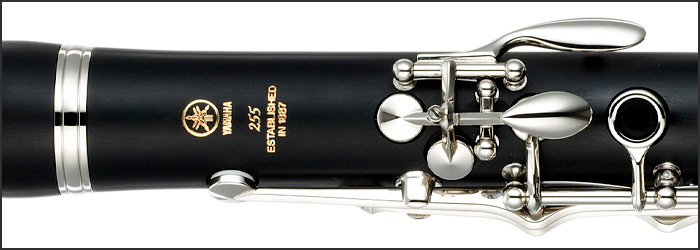
UPGRADE BENEFITS
Above all it’s to do with sound quality. What this really means is the pure tonal quality you can emit. Of course a good amount of this comes from the player, but it’s a combination of factors that includes (but is not limited to) player, clarinet, reed, mouthpiece and ligature. The importance of each element can be debated but of course the player and the instrument are fundamental.
When we talk about sound quality it’s often to players who are still on their musical journey and progressing. Often their focus is on playing the ‘right’ notes, remembering their scales, or making sure they try and play some of the dynamics that their teacher has circled repeatedly on their music! These things all need to be right but fundamentally we should look for something more in our playing. The sound quality, the musical interpretation and all the subtle nuances that make this a personal and human activity that can have some soul. It’s the same feeling when you hear any evocative sound, be it the roar of a Formula 1 car in person, or an amazing singer that pulls at the heart strings with the purity of their voice…it’s about more than just the notes. It’s how the notes are played and how the sound is projected and crafted so the musical story can be told.
So, with relation to clarinets what we know is that the student models are easy to play and lightweight because commonly they are made of plastic ABS. However, the tonal quality that ABS can emit is not as complex, rich or full of projection compared to what wood can offer as a material. What the sound is vibrating off or through is critical to the overall emission. Take for example Organ pipes, they vary in quality and materials based on the type of voicing they are supposed to emit (the Organ really is a massive old fashioned synthesiser!). So, on upgrade clarinets there are material changes and mechanical changes. Some will help with the tone, some will help with the way it plays (flexibility, balance of tuning, ease of emission) but the core reason we make the upgrade is to help us improve our sound.
INTERNAL DIFFERENCES
These are the hardest to show (for technical reasons) and probably the hardest to understand at first as they are not tangible things you can see. There are various technical challenges and opportunities inside the instrument for the manufacturer to explore:
- For example the shaping of the internal bore is critical to how the instrument plays across the range, from the tuning to the overall ‘feel’ of resistance and flexibility of tone. The practicality of this is how the internal bore is shaped (fig A) – basically the big hole down the middle! Various manufacturers use differing methods to shape this, the more complex being series of polycylindrical shapes that modulate in size and design throughout the instrument. The more complicated the process the more researched it has been and the likelihood is that it will balance the instrument more evenly. This is because as a design the Clarinet has fundamental issues, like any instrument it is a series of compromises and the job of the manufacturer is to design the best set of compromises that offer the player the best chance. On student models the shaping of the bore is usually far more rudimentary for cost, skill and material reasons.

Internal Bore & Tone Hole Undercutting
- Another example is the undercutting of the tone holes. How the tube of the tone hole enters the clarinet body affects the tuning and response of that note and it has a cumulative affect on how the overall instrument plays. There have been great steps in the shaping, the material and design of this undercut section (fig B) to help improve the ‘feel’ of how clarinets play.
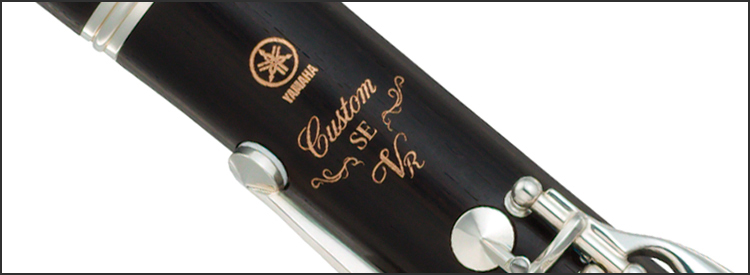
Custom Models
- Finally in these examples (we haven’t got space for everything!) is the speciality of workmanship. This is not to be underestimated, even in these hi-tech days, you still need skilled and experienced workers getting their hands dirty and crafting these instruments. The further up the food chain you go in terms of clarinet quality, the further up the skill level you are going. For example in the Buffet or Yamaha factories the people making the top pro models may be a small team of 4-8 technicians with 20-years experience each. They will be responsible for hand shaping the bore, the undercutting process, the selection of the wood, the fitting of the keys etc. If you imagine all the working parts and the various ways a clarinet is constructed, then that’s a whole lot of places where the quality can be affected. On student models the process is far more machine driven because of the materials used, and cost implications of hand involvement. Usually the quality control points are set lower than on an intermediate or pro instrument and they are often made in a less advanced factory with lower skilled workers. What this means in reality is that on a pro instrument, the 200-300 points within the manufacturing process can be completed more accurately, to last longer, to perform better and to help the clarinet play better.
EXTERNAL DIFFERENCES
These are far easier to show and explain, it’s like the upgrade specs on a car or a stereo, they are tangible and easy to understand. Let’s take a look at some of the common differences and why they are introduced:
First up we have a material difference from student models. Upgrade and Pro models are usually made of African Blackwood (Grenadilla) and this has a massive effect on the sound that can be produced. Without changing anything else (reed, mouthpiece etc) if you simply put a student who is at Grade 4/5 on a plastic model, then straight onto a wooden model you will hear the difference. We’ve said before it’s about a multitude of elements to improve your sound (and practice is a massive help!!) but wood vs plastic will make an immediate improvement. We’ve seen parents suddenly get on board with the idea as soon as they hear their child play the first few notes – “wow, even I can hear the difference!”, often these are the same parents who claim not to be musical – you don’t need to be, you just need to listen and enjoy!
There are also some key specifications and even plating differences that are offered on upgrade/pro model clarinets. Each designed to help with a technical challenge of playing the instrument, or to offer a different sound or feel:
- Many upgrade clarinets have the option of an alternate Eb key on the lower joint. This sits above the left hand pinky low E/F# keys and is essentially an alternate finger option for playing an Eb (instead of the right hand Eb key which is top left on the cluster of 4 near the ‘crows foot’). This can be useful in various passages of more demanding music where your fingers seem to be doing a digit-based version of ‘Riverdance’! We’ve all had to write L-R-L-L-R-R-L on our parts at some point when learning to try and help navigate these lower keys. The extra Eb key does help…if the manufacturer put’s it in the right place – but that’s a story for another day.
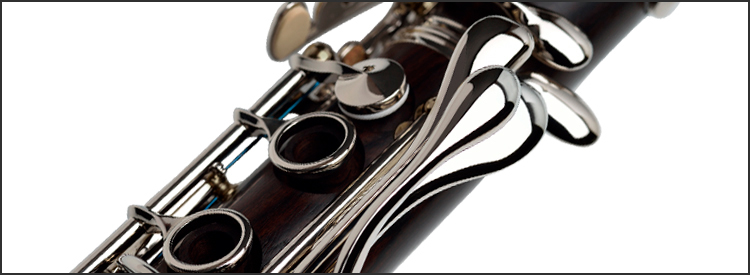
Left Hand ‘Extra’ Eb Key
- Another key option which is becoming popular at the pro end of the market is a low E/F ‘correction key’. At first this sounds a bit odd to the un-initiated, why wasn’t it ‘correct’ in the first place! Why do I need a key?! Well, earlier on we mentioned that any musical instrument is a set of compromises and one common challenge is that the low F note on the instrument is quite often a bit flat in tuning. I won’t go into why but it’s to do with the tube length, the bore and a myriad of other very boring mathematical calculations that are used to balance the overall tuning and relevant compromises! Anyway, the point is some players always wish they could bring the pitch up of that note, you can of course do it with your embouchure to a degree but now this lever raises the pitch of these individual notes and it can be deployed as and when the player wants. There are various versions by Backun, Buffet and Yamaha – each believing their version is best.
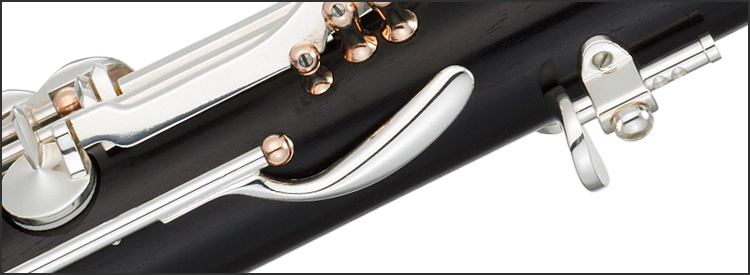
Low E/F ‘Correction Key’
- I’ve added this in because although it’s a small thing, it’s something you might easily miss and it shows the level of detail manufacturers are going to when trying to squeeze every last benefit or difference out of their designs. There are examples of such small differences as flattening of the wood at the end of the bell to affect the clarity of the lower register notes. There is also a history of different ‘cut-outs’ inside the bell which similarly affect how the low notes speak and project.
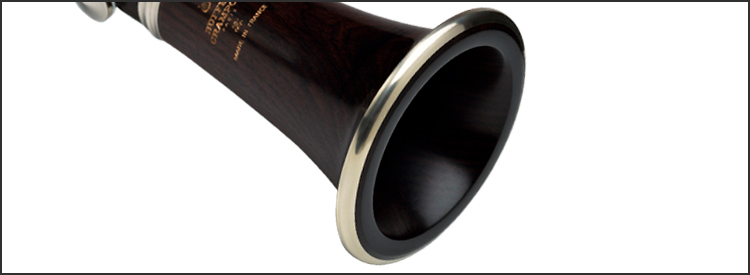
Flat Bell
- Finally you can also find instruments with different plating on the keywork. On the example below we have the Yamaha CSGIIIH which has ‘Hamilton Plating’ keywork. This is a mix of Gold plate and nickel and not only is this aesthetically different but there have been player tests where they report differences in the tone of the instrument and how the keys respond under the fingers.
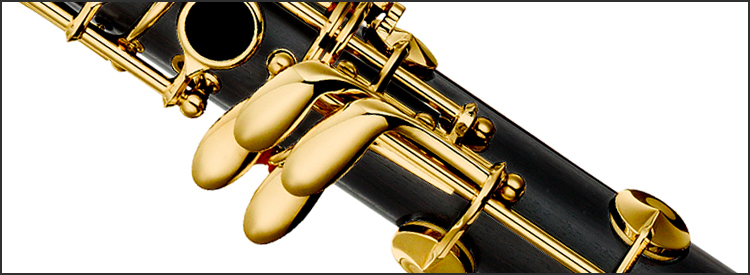
Yamaha Hamilton Plated Keywork
WHERE TO START LOOKING?
There are a myriad of reasons to upgrade, all of which should make your clarinet playing experience more enjoyable. Upgrading to the correct model will help you produce a great sound, alongside the mouthpiece, reed and of course your own practice and input. It’s not always as simple as the more money you spend the better it gets, rather we would suggest working with us to find the right instrument for you based on usage, your experience and many other factors.
If you’re making your first upgrade, why not check out the video below as we look at the best options for under £1,000.
We offer a wide range of upgrade wooden clarinets from just £500 upto £5,000 with many models in-between. Please do get in touch if you have any clarinet related queries and one of our Woodwind Specialists will get back to you with help and advice.
